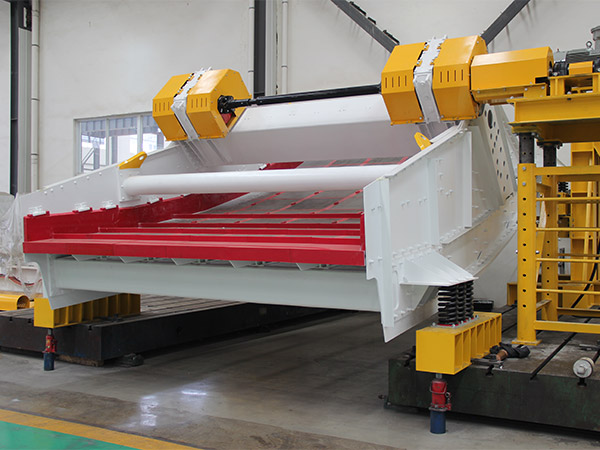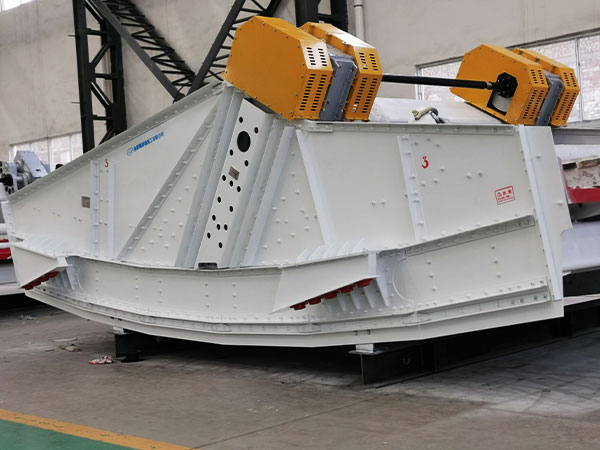Introduction to Linear Vibrating Screen: Composition, Operating Principle, Application, Advantages
A linear vibrating screen is a type of vibrating screen machine used for screening and grading materials in various industries. It employs a linear motion to convey materials along the vibrating surface, providing efficient and effective screening of granular and bulk materials. Here’s a detailed introduction to the linear vibrating screen.
Key Components of a Linear Vibrating Screen

Screen Surface
The screen surface is the primary component where the material separation takes place. It is typically made of wire mesh or perforated plates with specific opening sizes to allow particles of desired sizes to pass through.
Vibrator Motors
The linear vibrating screen is equipped with one or multiple vibrator motors that generate the vibration required for material movement. These motors are mounted on the screen frame and provide the necessary linear vibration.
Screen Frame
The screen frame supports the screen surface and vibrator motors. It is designed to withstand the dynamic forces generated during the screening process. The frame may be constructed from steel or other materials depending on the application.
Springs or Rubber Mounts
To isolate the vibrations generated by the vibrator motors, linear vibrating screens often use springs or rubber mounts. These components absorb and dampen the vibrations, preventing excessive transmission to the supporting structure.
Feed Inlet and Discharge Chutes
The linear vibrating screen has designated areas for material entry (feed inlet) and exit (discharge chute). The material is usually fed onto the screen surface through the feed inlet, and the screened material exits through the discharge chute.
Drive Unit
The drive unit includes the motor(s), which generate the linear vibration, and may also include other components like belts or gears depending on the specific design of the linear vibrating screen.
Operating Principle

Vibration Generation
The vibrator motors generate linear vibrations that cause the screen surface to move along a straight line. This motion helps convey and separate the material based on size.
Material Feed
Material is introduced onto the vibrating screen surface through the feed inlet. The linear motion of the screen surface moves the material along the length of the screen.
Screening Process
As the material travels along the vibrating surface, particles that are smaller than the openings in the screen pass through, while larger particles are retained. This process effectively separates materials into different size fractions.
Material Discharge
The screened material exits through the discharge chute, and the remaining oversize material continues along the screen surface until it reaches the discharge end.
Applications

Aggregate and Mining
Linear vibrating screens are commonly used in the mining and quarrying industries for sizing and separating aggregates.
Recycling
In recycling facilities, linear vibrating screens are employed to separate and classify recyclable materials.
Chemical and Pharmaceutical
Linear vibrating screens are used in chemical and pharmaceutical industries for separating and classifying powders and granules.
Food Processing
The food industry uses linear vibrating screens for applications such as grading and separating food products.
Construction and Building Materials
In the construction industry, these screens are used for sizing and classifying various building materials.
Advantages

High Efficiency
Linear vibrating screens are known for their high screening efficiency, making them suitable for various industries with demanding screening requirements.
Low Maintenance
These screens are often designed for low maintenance and are relatively easy to operate.
Versatility
Linear vibrating screens can handle a wide range of materials and are suitable for various applications due to their versatility.
Compact Design
The linear motion design allows for a relatively compact screen size while maintaining high screening capacity.
Understanding the components, operating principles, and applications of a linear vibrating screen is essential for optimizing its performance in different industries and applications. Regular maintenance and proper operation contribute to the longevity and efficiency of the equipment.



